2007.08.04 17:32
Koolhaas & Eisenman Discuss "Urgency" at the CCA
I thought the point was Archaeologies of the Future.
'Opaque' perhaps, but never without clues. The way I see it Koolhaas's architecture becomes him while Eisenman becomes his architecture. [Vanbrugh is at the top of the list if that helps.]
"Pejorativity" is an important chapter in The Irrelevancy Style of Architecture.
My tendencies are more coincidental than anything else.
2009.08.16 15:44
Postmodernism sucks... discuss
Many of the architects who utilized "the application of content and forms and motifs that are deliberately identifiable in cultural and historical terms" 30 years ago still design that way today (if they are still active and/or alive).
The first Greenaway film I saw was The Draughtsman's Contract in 1983, 27 years ago, and that's the kind of murder mystery I'm talking about.
The first Tarantino film I saw was Pulp Fiction in 1994 and soon after that architecture started becoming very virtual.
2011.04.25 21:39
Best Archinect quotes?
Elizabeth Taylor playing an actress reenacting a quondam part she played, now used as an alibi in response to the detective investigating her husband's murder in The Mirror Cracked, followed by the shock when the detective names the movie within which the just reenacted scene occurred.
There used to be this bird outside my bedroom window that sounded just like my alarm clock.
So, doesn't everyone deserve a toilet that will kiss their ass?
He laid the first stone of the historic Bastille (Paris) April 22, 1370. The building was finished in about four years. This work brought upon him the animosity of the people. He was condemned by the bishop of Paris and himself imprisoned in the Bastille, March 1, 1382. He mustered an escape to Dijon, where he died soon after.
In my studio, you will be asked to design a building that everyone will hate to the point where you, the architect, will be imprisoned within it.
"We are all mirrors that have to see ourselves regardless."
| |
2013.03.25 12:24
24 March
Since part of New Not There City is going to periodically bilocate between the Benjamin Franklin Parkway and the Triumphal Way of the Campo Marzio...
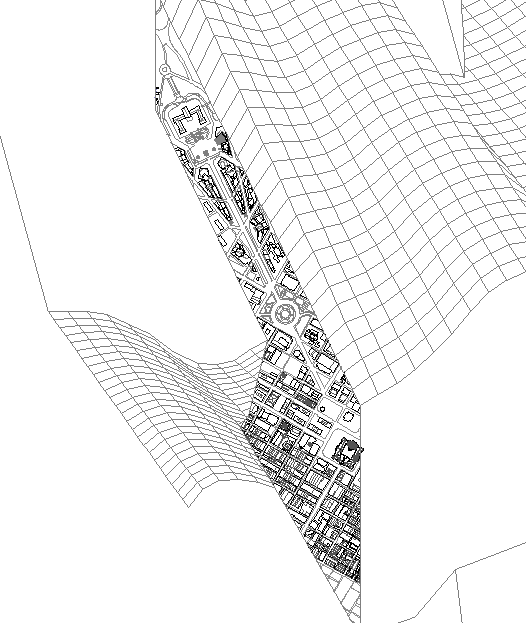
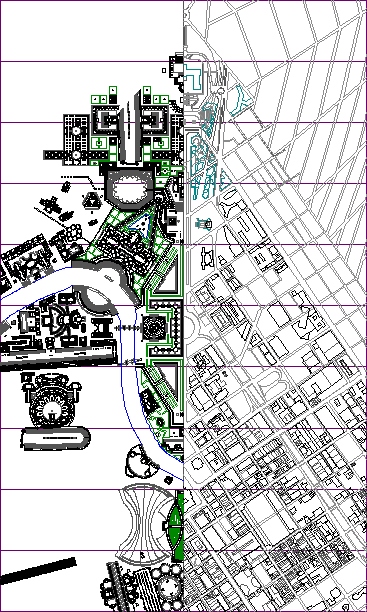
...I was reminded of Calvino's Invible Cities and the various urban tropes written about there. So last night I began to read Invisible Cities again. I started falling asleep while reading about Chloe. Early this morning I continued...
Cities and Eyes 1
The ancients built Valdrada on the shores of a lake, with houses all verandas one above the other, and high streets whose railed parapets look out over the water. Thus the traveler, arriving, sees two cities: one erect above the lake, and the other reflected, upside down. Nothing exists or happens in the one Valdrada that the other Valdrada does not repeat, because the city was so constructed that its every point would be reflected in its mirror, and the Valdrada down in the water contains not only all the flutings and juttings of the facades that rise above the lake, but also the rooms' interiors with ceilings and floors, the perspective of the halls, the mirrors of the wardrobes.
Valdrada's inhabitants know that each of their actions is, at once, that action and its mirror-image, which possesses the special dignity of images, and this awareness prevents them from succumbing for a single moment to chance and forgetfulness. Even when lovers twist their naked bodies, skin against skin, seeking the position that will give one the most pleasure in the other, even when murderers plunge the knife into the black veins of the neck and more clotted blood pours out the more they press the blade that slips between the tendons, it is not so much their copulating or murdering that matters as the copulating or murdering of the images, limpid and cold in the mirror.
At times the mirror increases a thing's value, at times denies it. Not everything that seems valuable above the mirror maintains its force when mirrored. The twin cities are not equal, because nothing that exists or happens in Valdrada is symmetrical: every face and gesture is answered, from the mirror, by a face and gesture inverted, point by point. The two Valdradas live for each other, their eyes interlocked; but there is no love between them.
Maybe today I'll finish the planning of what the originals call Versailles Sigh, but in time will be known as Sprudelnspiegelstadt.
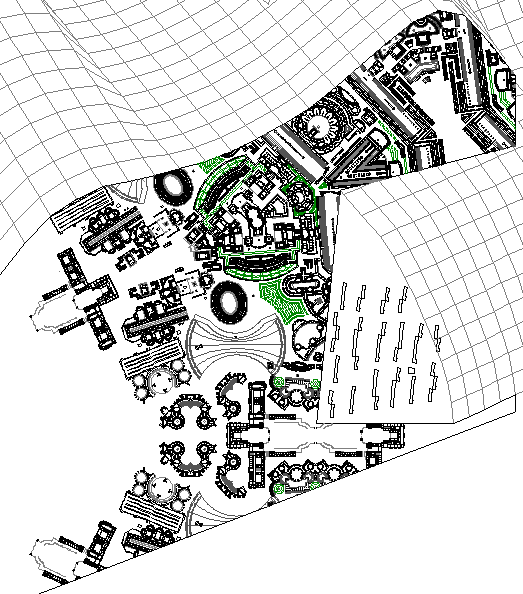
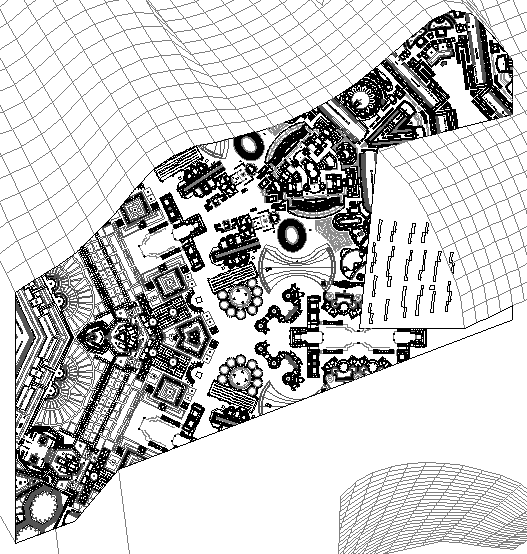
| |
2013.11.11 13:27
atemporality at work?
t a m m u z, I did something I've never done before. I printed out your post yesterday, so I could read it more carefully later in the evening, all in the hope of then crafting a proper response. I wound up writing not much of anything, but I continually reread your post, and found more in it with each reading. It was quite stimulating, actually.
I like how our separate participation in the 2008 theory thread now seems to have been more of a spontaneous jazz riff than a tete-a-tete. And I like, too, how atemporality was a key part of the riff. (The continual re-reading of your post last night also turned out to be like listening to jazz.)
Your ATM story ultimately brought to mind the architectural legacy Ludwig II, king of Bavaria--among other things, he actually did reproduce Versailles. Economically, however, Ludwig's projects were not valorization, rather he spent all his family fortune employing artisans, thus investing everything into his kingdom, which he knew would soon come to an end because of Bismarck's looming plan of German unification. Ludwig essentially made sure his money (and there certainly was a lot of it) was spent entirely for the benefit of his kingdom. It was only after he had spent all his money that his own government then abduced him and declared him insane. It seems there may be many interesting parallels between Ludwig's architecture and the Architectural Teller Machine. Interesting too the parallel that Ludwig's Neuschwanstein and Furness's National Bank of the Republic were both completed in the same year.
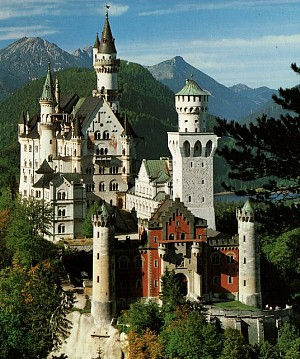
Eduard Riedel, et al, Schlo▀ Neuschwanstein (Bavaria: 1869-1884).
| |
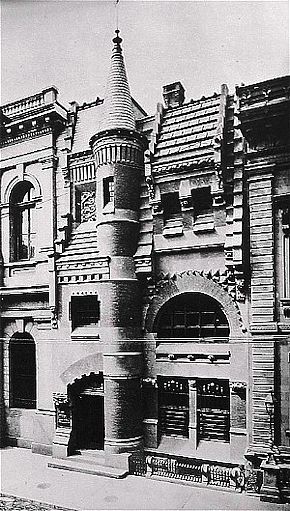
Frank Furness, National Bank of the Republic [Clearing House] (Philadelphia: 313 Chestnut Street, 1883-84, demolished).
"The city street fašade can provide a type of juxtaposed contradiction that is essentially two-dimensional. Frank Furness' Clearing House, now demolished like many of his best works in Philadelphia, contained an array of violent pressures within a rigid frame. The half-segmental arch, blocked by the submerged tower which, in turn, bisects the fašade into a near duality, and the violent adjacencies of rectangles, squares, lunettes, and diagonals of contrasting sizes, compose a building seemingly held up by the buildings next door: it is an almost insane short story of a castle on a city street. All these relationships of structure and pattern contrast the severe limitations associated with a fašade, a street line, and contiguous row houses."
Robert Venturi, Complexity and Contradiction in Architecture (New York: Museum of Modern Art, 1966), p. 61.
|